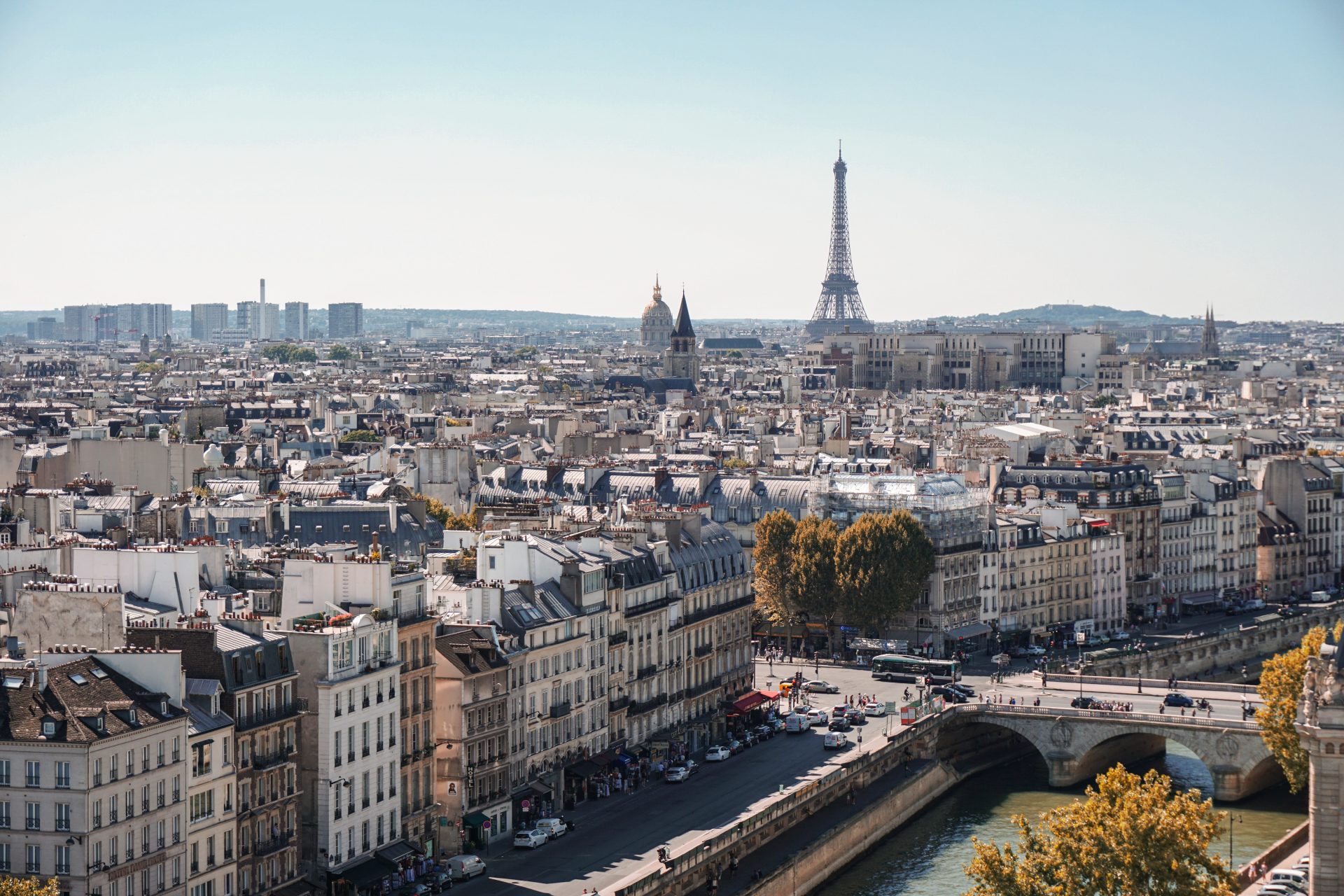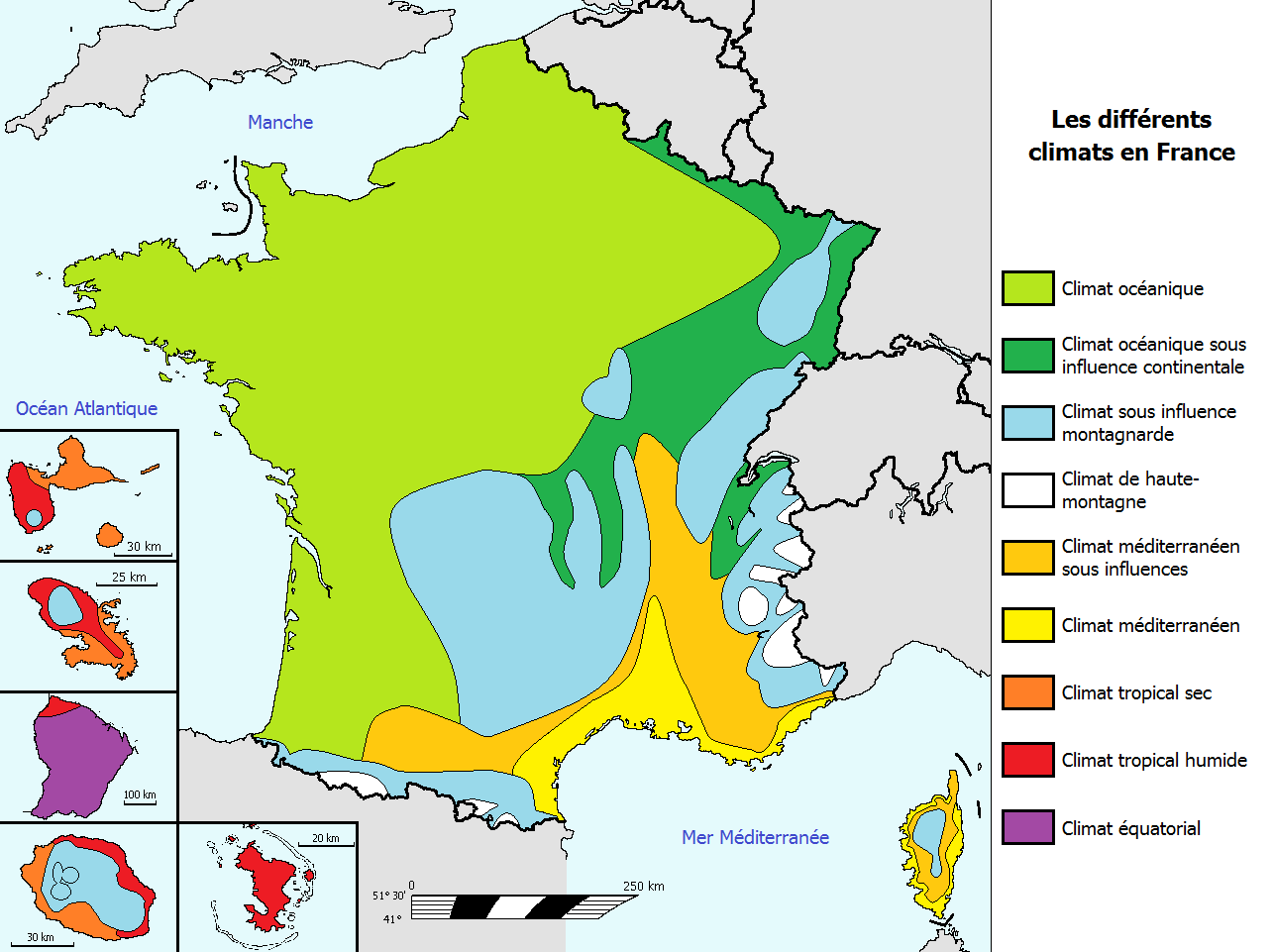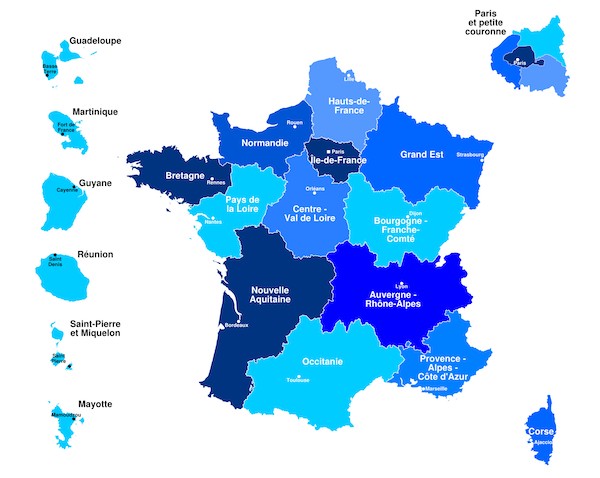Overview of France
Thématiques
Date de mise à jour
France – Key figures:
- Surface area: 633,186 sq. km.
- Population 66.6 million
- Capital city: Paris
- Official language: French
- Currency: Euro (EUR)
- System of government: Republic
- Founding member of the European Union
- Permanent member of the UN Security Council, NATO, OECD, OSCE, G8 and G20
- Time zone: UTC/GMT + 1 hour in winter; UTC/GMT + 2 hours in summer
- National day: July 14
Largest cities:

- Paris: 2,254,262 inhabitants
- Marseille: 855,393 inhabitants
- Lyon: 500,715 inhabitants
- Toulouse: 458,298 inhabitants
- Nice: 342,295 inhabitants
- Nantes: 292,718 inhabitants
- Strasbourg: 275,718 inhabitants
- Bordeaux: 243,626 inhabitants
- Lille: 231,491 inhabitants
President & Prime Minister
President of the Republic (Head of State): Mr. Emmanuel MACRON
Prime Minister (Head of Government): Mr. Sébastien LECORNU
Climate
The climate in mainland France is temperate, with quite significant regional differences. Temperatures are relatively mild and rainfall occurs throughout the year. Regional variations occur due to latitude and differences in distance to the sea or mountainous areas. Temperature variations are less pronounced on the French coast than in the rest of the country, but rainfall is higher.

Different climates in France
- Oceanic climate
- Oceanic climate with a continental influence
- Climate with a mountain influence
- High mountain climate
- Mediterranean climate with influences
- Mediterranean climate
- Dry tropical climate
- Humid tropical climate
- Equatorial climate
- The Channel
- Atlantic Ocean
- Mediterranean Sea
- Guadeloupe
- Martinique
- Guyane française
- Reunion
- Mayotte


